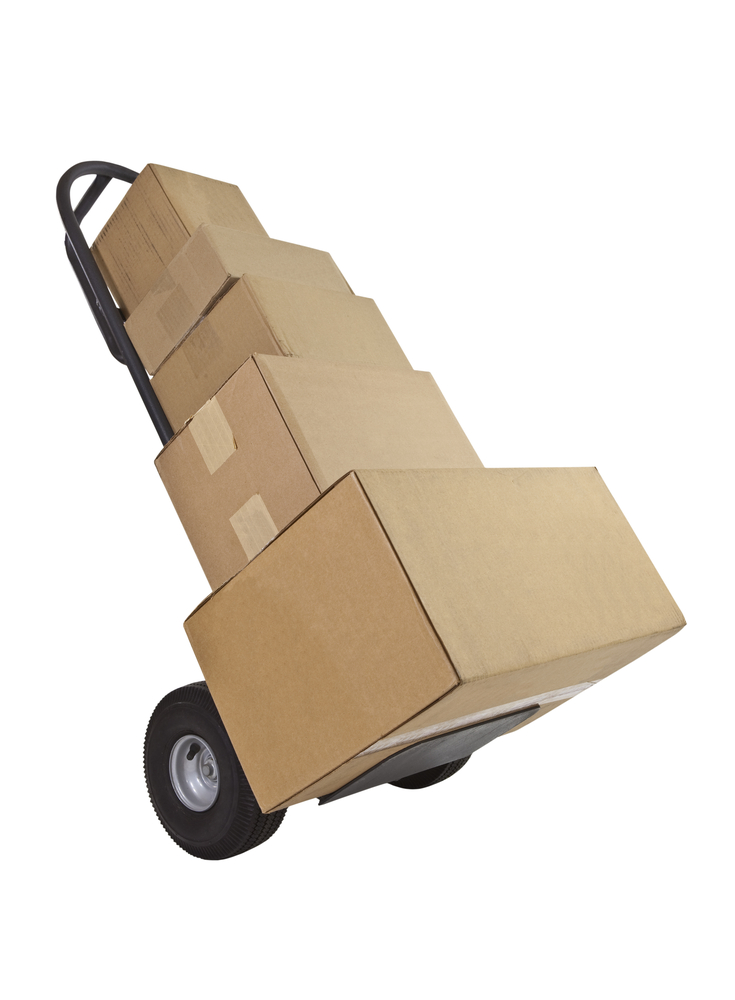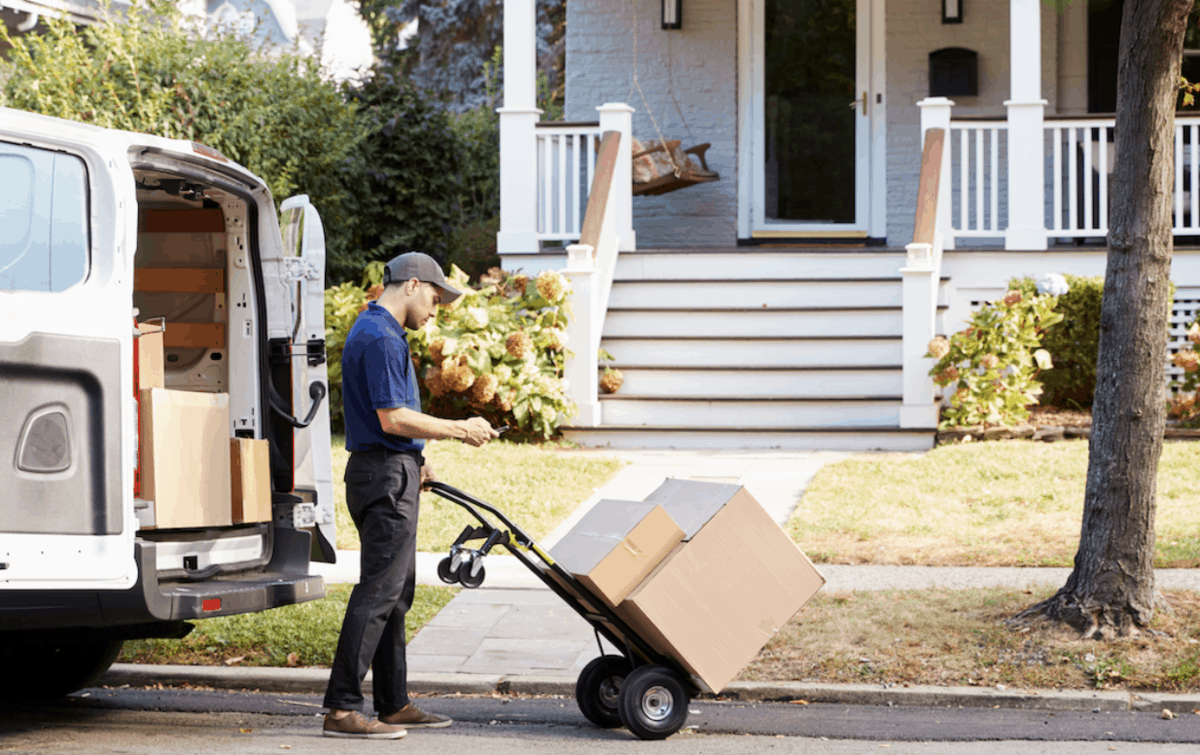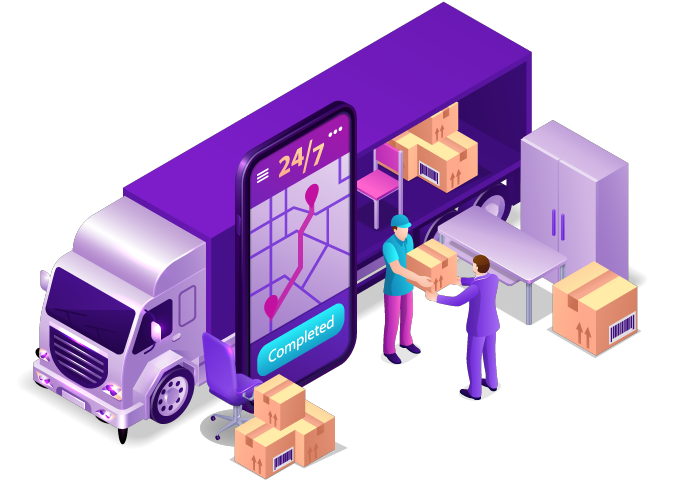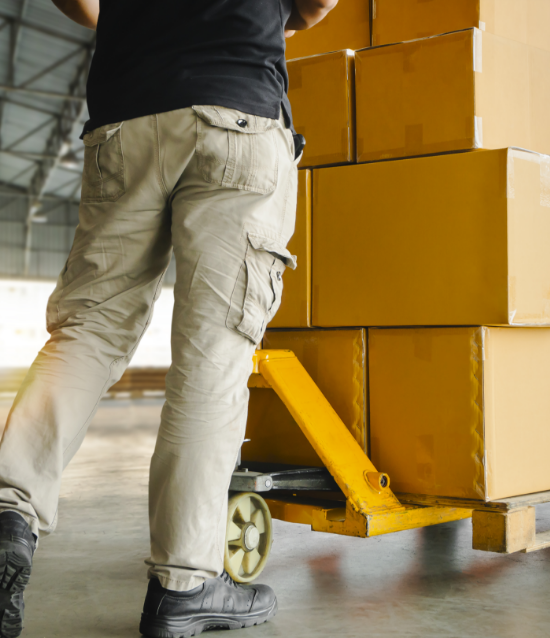The Ever Evolving Last-Mile Delivery World
In the late 1970s, one of the most popular shows on TV was a sitcom called “Happy Days.” The show was set in Milwaukee in the 1950s, and the premise, as implied by the title, is a sentimentality for the simpler times of old. The past was portrayed as less complicated. If we take that premise and apply it to today, that things are simply more complicated now; nowhere is that more apparent than in the way we shop.
Not too long ago, people went to a department store, searched for the products they wanted, browsed around the store, and made a purchase. Retailers made lots of money, and customers were happy. Later, mail orders and catalogs added convenience, but it didn’t necessarily disrupt the way consumers bought their products overall. The Internet, Amazon, and the growth of eCommerce did though. The pandemic brought digital commerce to a whole new level. The evolution from mostly brick-and-mortar shopping to buying online was rapid, and the logistics of getting products from the factory to the front porch became complicated and costly. Covid and the demand it caused exposed supply chain inefficiencies but also showed how volume-based logjams can cause businesses to lose customers over inefficient delivery.
The simple fact is that we live in a world where consumers expect orders to arrive within a very specific timeframe. Customers became accustomed to quick and cheap delivery. Any weakness in fulfilling those consumer expectations results in the buyer shopping elsewhere. 59% of consumers will walk away after several bad retail experiences, and 17% after just one bad experience. Last-mile delivery is central to delivering a superior consumer experience. Consumers don’t care if the seller does not have the ability to deliver to their remote rural location, or on the flip side, to their congested urban locale; they will just go elsewhere.

Earlier, retailers chose a carrier, set up a pickup, and then the package was on its way. Now, the turbo-charged increase in volume and customer time expectations have added multiple steps to the supply chain. Whereas before, shippers felt at ease leaving the responsibility for the parcel delivery solely with the carrier, now being comfortable with the partnerships the carriers have within the supply chain is a constant worry.

The most critical, complicated, and expensive part of any delivery is known as the last mile. According to a study conducted by Bringg, a delivery management software company, 89% of shippers are struggling with their last-mile delivery operations. The term last mile was initially coined by the telecommunications industry to describe when a home was being connected to the main cables. Think of a grid. Phone, electric, gas, and cable companies would run their main pipes, wires, or cables along the main thoroughfares of the grid. Then when it came time to set up service in a home, a connection needed to be made from the main cable, which was termed the last mile. This entailed planning and was the most expensive part of connecting service.
Today in supply chain management, the same planning is used for the movement of goods. The last mile in the supply chain, like in telecommunications and utilities, is the most expensive part of the process; in fact, the last mile accounts for over 53% of the total cost of a shipment. Transporting goods via truck, ship, rail, or air is efficient. Large quantities are loaded onto the transport and go from point A to Point B. Once the goods arrive at a high-capacity warehouse or distribution center, they have to get to their final destination. That last leg is much less efficient, accounting for the high cost.
Last-mile delivery has become an ecosystem within a larger ecosystem of logistics and supply chain. This resulted in a number of issues that could only be addressed by innovation. The effect on the environment of the increased truck volume, optimizing delivery, traffic and parking challenges in highly populated urban areas, and parcel tracking over multiple links in the supply chain are a few of them.
Amazon is a good example of an early innovator, because they turn over so much volume they were able to scale a program to be efficient and less expensive. One such program, the Amazon Delivery Service Partner (DSP) program, taps into what is known as the gig economy. The gig economy is a labor market that relies on temporary or part-time contractors rather than full-time employees. The major carriers now have similar programs. The trucks have the Amazon, UPS, or FedEx logos and look just like any of the company-owned trucks, but in reality, they are privately owned. Some of the gig workers are entrepreneurs who own a few trucks and hire workers and make a business out of it. These gig workers added much-needed personnel to cover the higher volume at the lowest possible cost to the carrier. The gig worker benefits from independence and flexibility, while the carriers do not have to hire these drivers for full-time positions, a costlier proposition.
Electric vehicles (EVs) are in wide use to help alleviate the problem of pollution caused by the increase in local trucking. Other environmentally safe alternatives exist. Bicycles often deliver the last leg of the journey. Drones, robots, and in some places, barges are employed for last-mile delivery, reducing the carbon footprint. EVs, scooters, bicycles, etc…serve the dual purpose of being efficient and environmentally friendly.
The evolution of last-mile delivery has made up-to-date parcel tracking more difficult.

The parcel is not only handled by multiple people but more and more of those people are employed by different companies, each with its own tracking and communications software. More effective GPS with live updates on traffic is needed to make last-mile delivery more efficient. Improved communication between carriers and last-mile deliverers is crucial. The accumulation of data from each and every delivery is employed to create greater efficiencies and improved communication. FedEx is now rolling out a grading system that evaluates its delivery contractors. Poor-performing ones will be dropped.
Some last-mile solutions are more analog. Delivery lockers are in wide use in Europe, Asia, and parts of Africa. In the US, Amazon pioneered the use of lockers. Recently, FedEx partnered with Walgreens in selected locations where the pharmacy chain accepts drop off and facilitates pickups of the carrier’s packages.

Suddenly, sellers need to be supply chain and logistics experts. When planning a delivery strategy, shippers need to be cognizant of all the steps and various handlers along the parcel’s route. Previously, a business might look at its shipping needs once a year, now with the variables in the supply chain always changing, it’s a constant concern. Even pricing and accessorials which were once predictable and consistent are changing more rapidly. Peak shipping surcharges for example, have taken on a whole new meaning in the eCommerce era.
Some larger companies are expanding their shipping departments to include experts in the field. Most small to medium enterprises can ill afford such luxuries; margins have gotten thinner as a result of the fast and quick delivery expectations of consumers. Choosing the right third-party logistics (3PL) company is crucial not only to save on the costs of shipping but also to guarantee that deliveries are made on time as promised. SPL Group is a white glove, concierge level 3PL that gets you the best rates on shipping with the highest level of service. Contact SPL to find out more.


